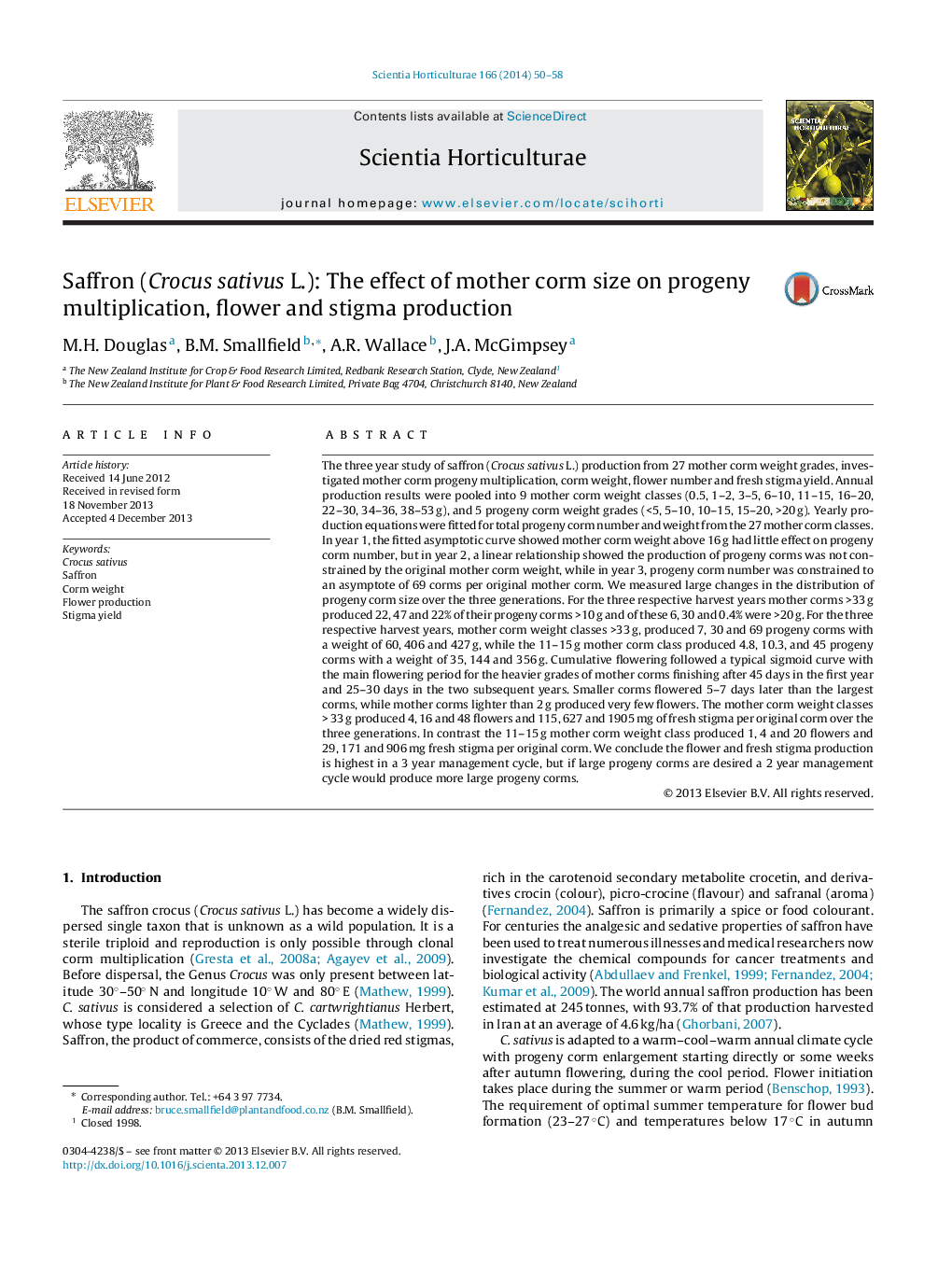| کد مقاله | کد نشریه | سال انتشار | مقاله انگلیسی | نسخه تمام متن |
|---|---|---|---|---|
| 4566931 | 1628832 | 2014 | 9 صفحه PDF | دانلود رایگان |

• Production curves relate yield to weight of planted corms over 3 years.
• Corms above 30 g gave 2.4 times stigma production of 11–15 g corms over 3 years.
• Progeny corms <10 g predominate and best yield of corms >20 g occurs in year 2.
• Progeny corm size distribution varied for mother corm weight class in years 2 and 3.
• Management cycle depends on the objective of flowers or corms.
The three year study of saffron (Crocus sativus L.) production from 27 mother corm weight grades, investigated mother corm progeny multiplication, corm weight, flower number and fresh stigma yield. Annual production results were pooled into 9 mother corm weight classes (0.5, 1–2, 3–5, 6–10, 11–15, 16–20, 22–30, 34–36, 38–53 g), and 5 progeny corm weight grades (<5, 5–10, 10–15, 15–20, >20 g). Yearly production equations were fitted for total progeny corm number and weight from the 27 mother corm classes. In year 1, the fitted asymptotic curve showed mother corm weight above 16 g had little effect on progeny corm number, but in year 2, a linear relationship showed the production of progeny corms was not constrained by the original mother corm weight, while in year 3, progeny corm number was constrained to an asymptote of 69 corms per original mother corm. We measured large changes in the distribution of progeny corm size over the three generations. For the three respective harvest years mother corms >33 g produced 22, 47 and 22% of their progeny corms >10 g and of these 6, 30 and 0.4% were >20 g. For the three respective harvest years, mother corm weight classes >33 g, produced 7, 30 and 69 progeny corms with a weight of 60, 406 and 427 g, while the 11–15 g mother corm class produced 4.8, 10.3, and 45 progeny corms with a weight of 35, 144 and 356 g. Cumulative flowering followed a typical sigmoid curve with the main flowering period for the heavier grades of mother corms finishing after 45 days in the first year and 25–30 days in the two subsequent years. Smaller corms flowered 5–7 days later than the largest corms, while mother corms lighter than 2 g produced very few flowers. The mother corm weight classes > 33 g produced 4, 16 and 48 flowers and 115, 627 and 1905 mg of fresh stigma per original corm over the three generations. In contrast the 11–15 g mother corm weight class produced 1, 4 and 20 flowers and 29, 171 and 906 mg fresh stigma per original corm. We conclude the flower and fresh stigma production is highest in a 3 year management cycle, but if large progeny corms are desired a 2 year management cycle would produce more large progeny corms.
Journal: Scientia Horticulturae - Volume 166, 13 February 2014, Pages 50–58